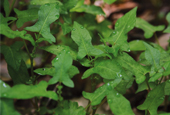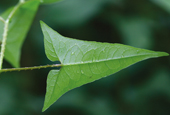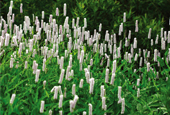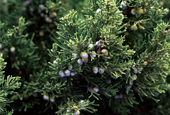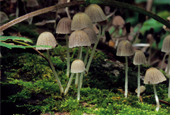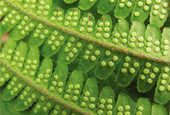View this article in another language
- 한국어
- English
- 日本語
- 中文
- العربية
- Español
- Français
- Deutsch
- Pусский
- Tiếng Việt
- Indonesian
Flora & Fauna of Korea #14
Korea.net publishes a series of articles, “Nature You Meet in the Mountains,” about the peninsula’s mushrooms, insects, trees and herbs & flowers.
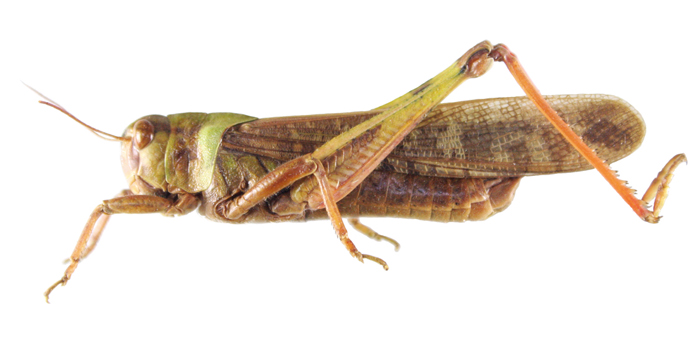
Insects
Name: 풀무치 Pulmuchi
Scientific name: Locusta migratoria (Linne)
Distribution: worldwide
This locust is about 48 to 65 millimeters in length. It comes normally in green, black or brown. It’s normally invisible in the grass. It is quite similar to the kongjungi, another species of grasshopper introduced in a previous article in this series. Unlike the kongjungi, however, the thorax of this locust has a vague ridgeline running down the center and is divided into two parts along a horizontal line. The forewings are long, slender and light in color and have random patterns. In the past, in Korea and China, this was called a hwangchung, the word for “locust.” Flying in flocks, they cause great damage to agriculture.
Ecology: This locust can be observed from July to November. It lives mainly on rice and inhabits densely wooded areas, such as burial grounds.
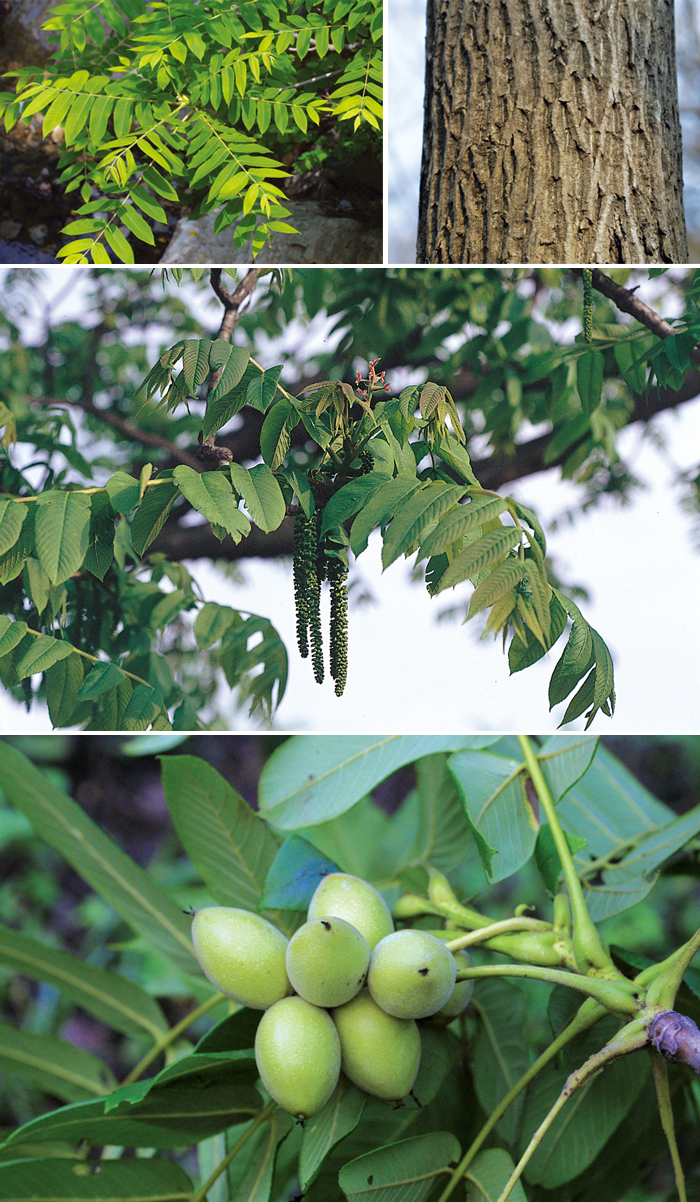
Trees
Name: 가래나무 Garaenamu
Scientific name: Juglans mandshurica Maxim.
Type: deciduous broadleaf
Blooming season: May to October
Bearing season: September
Distribution: mainly along the Baekdudaegan mountain ridge
Many species of this tree are found along the Baekdudaegan mountain ridge that runs the length of Korea. It grows to about 20 meters. The bark cracks lengthwise. The leaves are pinnated, with 7 to 17 leaflets, and are oval, with a pointy end and sawtooth edges. This dioecious tree gives bloom to red female flowers in clusters at the end of the branch. The male inflorescence is green-brown and hangs from the branch like a tail. The tree bears an oval pine cone fruit with a pointy end.
The tree is often utilized in construction and in making furniture and sculptures, as well as for medicinal uses.
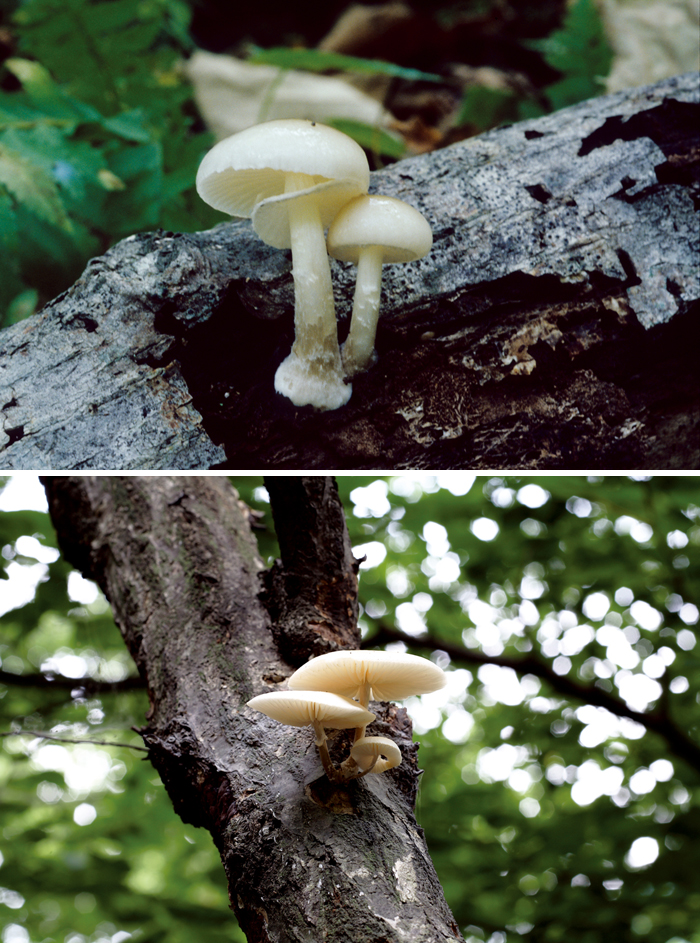
Mushrooms
Name: 끈적긴뿌리버섯 Ggeunjeok ginbburi beoseot
Scientific name: Oudemansiella mucida (Schrad.) Hohn.
Type: saprophile spore
Print: white
Edible
This mushroom, commonly known as porcelain fungus, grows individually or in clusters from fallen or dead broadleaved trees. The caps are 3 to 8 centimeters across and get mildly flattened over time. They are pale grey-brown or white, semi-translucent and covered in a slimy membrane.
The gills are white, adnate, broad and somewhat distant from each other. The sack is roughly 3 to 7 centimeters by 3 to 7 millimeters. The fungus is rarely confused with other species.
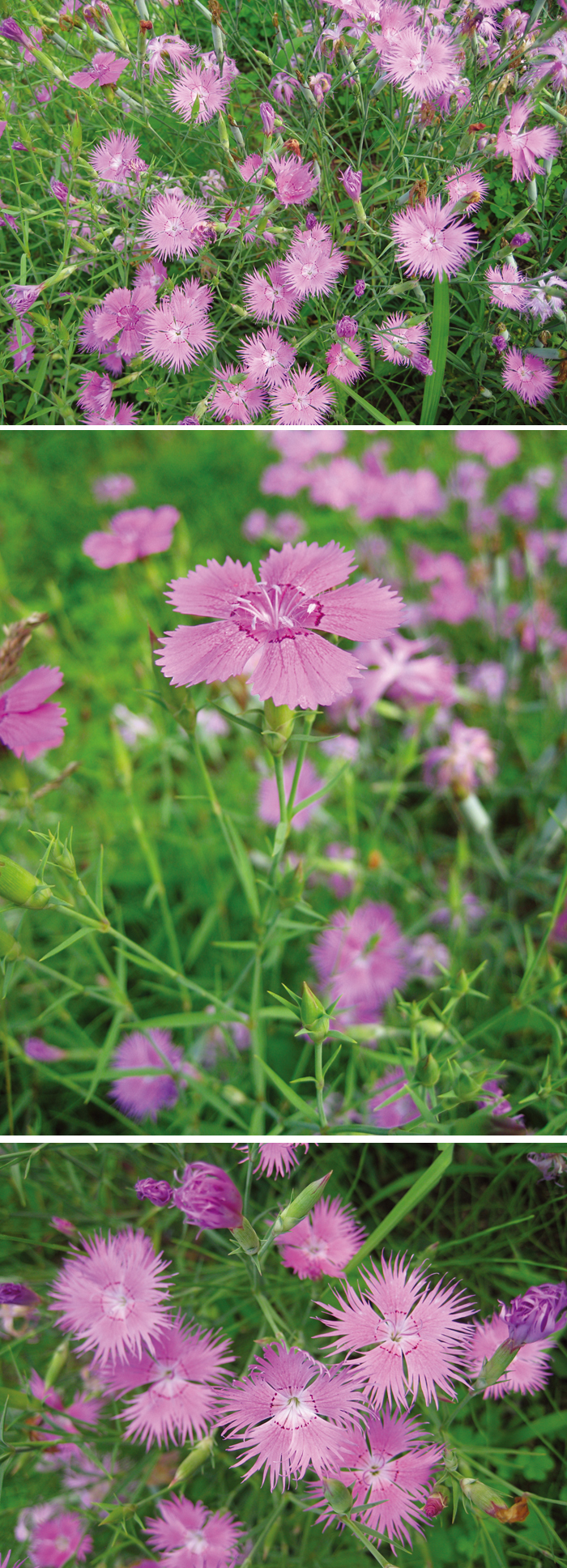
Herbs & Flowers
Name: 패랭이꽃 Paeraengiggot
Scientific name: Dianthus chinensis L.
Blooming season: June to August
Distribution: mountains nationwide
This perennial is mostly found in dry places. It grows to a height of 30 centimeters. The leaves grow opposite each other and form clusters at the base, with a sharp leaflet in the center. The bright pink flower blooms upward toward the sky. The flower has five petals, a dark pattern in the center, and random shapes along the edges. It bears a capsule fruit with an edge split into four parts.
*This series of article about Korea’s insects, trees, mushrooms and herbs & flowers has been made possible through the cooperation of the Korea National Arboretum.
Korea.net publishes a series of articles, “Nature You Meet in the Mountains,” about the peninsula’s mushrooms, insects, trees and herbs & flowers.

Insects
Name: 풀무치 Pulmuchi
Scientific name: Locusta migratoria (Linne)
Distribution: worldwide
This locust is about 48 to 65 millimeters in length. It comes normally in green, black or brown. It’s normally invisible in the grass. It is quite similar to the kongjungi, another species of grasshopper introduced in a previous article in this series. Unlike the kongjungi, however, the thorax of this locust has a vague ridgeline running down the center and is divided into two parts along a horizontal line. The forewings are long, slender and light in color and have random patterns. In the past, in Korea and China, this was called a hwangchung, the word for “locust.” Flying in flocks, they cause great damage to agriculture.
Ecology: This locust can be observed from July to November. It lives mainly on rice and inhabits densely wooded areas, such as burial grounds.

Trees
Name: 가래나무 Garaenamu
Scientific name: Juglans mandshurica Maxim.
Type: deciduous broadleaf
Blooming season: May to October
Bearing season: September
Distribution: mainly along the Baekdudaegan mountain ridge
Many species of this tree are found along the Baekdudaegan mountain ridge that runs the length of Korea. It grows to about 20 meters. The bark cracks lengthwise. The leaves are pinnated, with 7 to 17 leaflets, and are oval, with a pointy end and sawtooth edges. This dioecious tree gives bloom to red female flowers in clusters at the end of the branch. The male inflorescence is green-brown and hangs from the branch like a tail. The tree bears an oval pine cone fruit with a pointy end.
The tree is often utilized in construction and in making furniture and sculptures, as well as for medicinal uses.

Mushrooms
Name: 끈적긴뿌리버섯 Ggeunjeok ginbburi beoseot
Scientific name: Oudemansiella mucida (Schrad.) Hohn.
Type: saprophile spore
Print: white
Edible
This mushroom, commonly known as porcelain fungus, grows individually or in clusters from fallen or dead broadleaved trees. The caps are 3 to 8 centimeters across and get mildly flattened over time. They are pale grey-brown or white, semi-translucent and covered in a slimy membrane.
The gills are white, adnate, broad and somewhat distant from each other. The sack is roughly 3 to 7 centimeters by 3 to 7 millimeters. The fungus is rarely confused with other species.

Herbs & Flowers
Name: 패랭이꽃 Paeraengiggot
Scientific name: Dianthus chinensis L.
Blooming season: June to August
Distribution: mountains nationwide
This perennial is mostly found in dry places. It grows to a height of 30 centimeters. The leaves grow opposite each other and form clusters at the base, with a sharp leaflet in the center. The bright pink flower blooms upward toward the sky. The flower has five petals, a dark pattern in the center, and random shapes along the edges. It bears a capsule fruit with an edge split into four parts.
*This series of article about Korea’s insects, trees, mushrooms and herbs & flowers has been made possible through the cooperation of the Korea National Arboretum.
